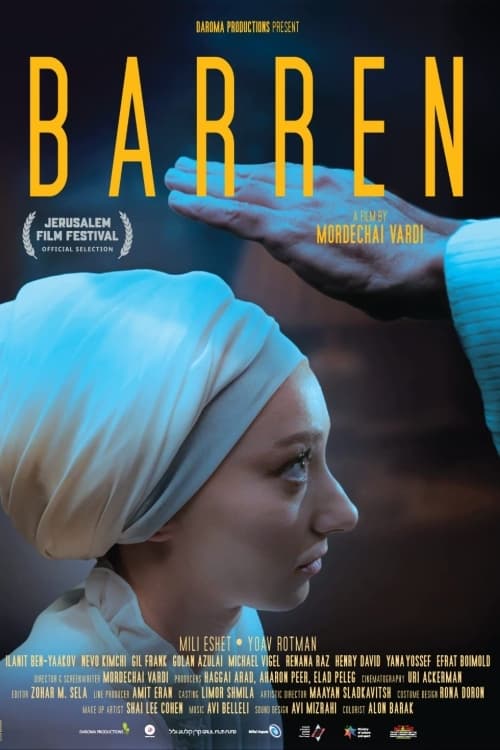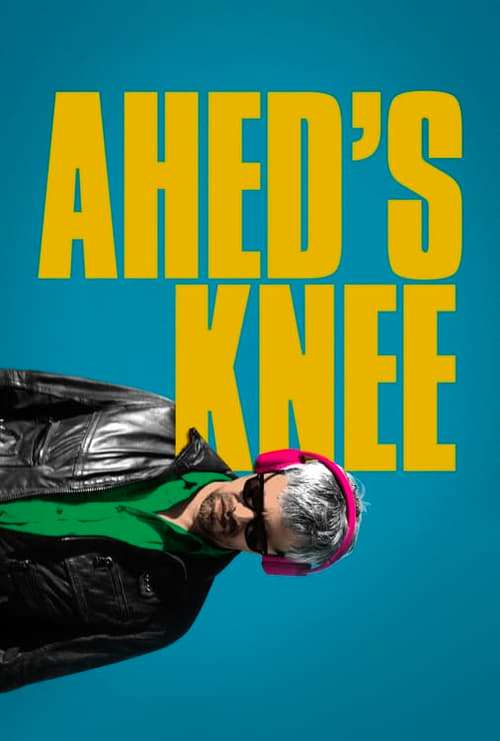
Ask Your Own Question
What is the plot?
The film All Eyes Off Me opens in a dimly lit, crowded apartment in Tel Aviv, pulsating with the chaotic energy of a late-night party. The air is thick with smoke and the sharp scent of drugs, as young adults drift through the rooms, their conversations a blur of confessions and distractions. Among them is Danny, played by Hadar Katz, who moves through the crowd with a quiet urgency, her eyes searching desperately for Max, the man she needs to tell something that will change everything. She is visibly detached, her expression a mixture of anxiety and resignation, as she navigates the party's distractions--a persistent partner who tries to kiss her, a pair snorting lines in the bathroom, and a woman who unexpectedly kisses her on the dance floor. Each interruption pulls her further from her goal, yet the weight of her secret presses on her.
Finally, Danny finds Max, portrayed by Leib Lev Levin, but he is not alone. Max is deeply engaged with his new girlfriend, Avishag (Elisheva Weil), whose confident and sexually assertive presence contrasts sharply with Danny's fragile state. Danny's voice breaks the party's hum as she tells Max about her pregnancy, recounting a past infatuation in Berlin with a man who admired her shoes--a story that reveals her vulnerability and longing. Her words hang in the air, but Max's attention is fractured; he is absorbed in Avishag and the new life unfolding with her. Danny's confession about planning an abortion is met with a mix of dismissal and discomfort, and though she tries, she cannot fully reach Max. The emotional tension between them is palpable, underscored by Danny's final, desperate glance before she disappears from the party, leaving her fate and the pregnancy unresolved. The party's wildness contrasts with her silent retreat, a poignant visual of isolation amid a crowd.
The narrative then shifts to Max and Avishag's apartment, where the mood changes but the tension remains. Here, Max attempts to satisfy Avishag's desire for rougher, more violent sex--a revelation that shocks him but also reveals his eagerness to please. Their sexual encounters are depicted with raw, unfiltered intimacy, the camera lingering on their bodies and expressions in explicit detail. Avishag's demands push Max beyond his comfort zone, and their interactions become a complex dance of power, vulnerability, and miscommunication. Avishag's cracked iPhone, which she watches The X Factor on at a dog park, symbolizes her fractured identity--a blend of mainstream interests and darker fantasies. This juxtaposition is visually striking: Avishag's face illuminated by the cracked screen as she listens to a heartfelt rendition of "Hurt" by Christina Aguilera, her expression unreadable, caught between longing and detachment.
Despite Max's efforts, Avishag remains unsatisfied, her sexual experimentation with him failing to fill the void she feels. This dissatisfaction leads her to seek refuge in a different kind of relationship. The film's final vignette unfolds in the apartment of Dror, an older man for whom Avishag dog-sits. Dror, played by Yoav Hayt, is a quiet, reserved figure who contrasts with the youthful chaos of the previous scenes. Avishag makes herself at home in his space--drinking his wine, sleeping in his bed, and ultimately attempting to seduce him when he returns. The scene is charged with unspoken power dynamics and emotional complexity. Avishag's boldness in crossing boundaries is both a search for control and a cry for connection. Dror's response is subtle, leaving the outcome ambiguous, but the tension between them is undeniable.
Throughout the film, there are no deaths or physical violence; instead, the conflicts are emotional and psychological, revolving around unspoken truths and failed communication. Danny's pregnancy is the central secret that drives the narrative, yet she never fully reveals it to Max, highlighting the film's theme of the limits of honesty. Max's attempts to meet Avishag's sexual desires expose the fragility of their intimacy. Avishag's interactions with Dror further complicate the story, illustrating her struggle to find validation and meaning.
The film ends on a subdued and ambiguous note. Danny vanishes from the story after her failed attempt to communicate with Max, leaving her emotional state and pregnancy unresolved--a haunting silence that lingers over the narrative. Max and Avishag's relationship fizzles without dramatic confrontation, emphasizing the transient and fragile nature of their connection. Avishag's final attempt to connect with Dror remains open-ended, underscoring the film's refusal to offer neat resolutions. The camera lingers on moments of solitude and introspection, inviting the audience to reflect on the emotional fallout of the characters' choices.
In the closing scenes, the viewer is left with a sense of unresolved tension and quiet melancholy. The characters, though confident and sexually liberated, are deeply vulnerable and isolated, caught in a cycle of desire, miscommunication, and emotional detachment. The film's title, All Eyes Off Me, resonates as a poignant commentary on the characters' yearning to be seen and understood, even as they push others away. The story's structure--three interconnected vignettes--mirrors the fragmented nature of their lives and relationships, a mosaic of moments that refuse to coalesce into closure.
Thus, All Eyes Off Me concludes not with dramatic revelations or resolutions, but with a lingering question: how do we navigate intimacy and honesty in a world where even those closest to us remain enigmas? The film's final frame fades out on Avishag's ambiguous encounter with Dror, leaving the audience suspended in the emotional complexities of youth, freedom, and the search for connection.
What is the ending?
In the ending of "All Eyes Off Me," the main character, a young woman named Mia, confronts her past and the consequences of her actions. After a series of intense events, she finds a sense of closure and acceptance, leading to a pivotal moment of self-realization. The film concludes with Mia stepping into a new chapter of her life, leaving behind the turmoil that has defined her journey.
As the final act unfolds, the scene opens with Mia standing alone in her dimly lit apartment, the remnants of her chaotic life scattered around her. The camera captures her reflection in a cracked mirror, symbolizing her fractured identity. She takes a deep breath, her chest rising and falling as she grapples with the weight of her decisions. The emotional turmoil is palpable; her eyes glisten with unshed tears, revealing a mix of fear and determination.
In the next scene, Mia receives a phone call from her estranged mother, a voice from her past that she has long avoided. The conversation is fraught with tension, as old wounds are reopened. Mia's voice trembles as she confronts her mother about the abandonment she felt growing up. The dialogue is raw and honest, showcasing Mia's vulnerability and her desperate need for validation. As the call ends, Mia's expression shifts from anger to a profound sadness, realizing that reconciliation may never come.
The following scene transitions to a gathering of Mia's friends, who have been her support system throughout her struggles. They are gathered in a cozy living room, laughter and warmth filling the space. However, Mia feels a disconnect, her mind racing with thoughts of her unresolved issues. She watches her friends, their carefree spirits contrasting sharply with her internal chaos. The camera lingers on her face, capturing the conflict between her desire for connection and her feelings of isolation.
In a pivotal moment, Mia steps outside into the night, the cool air hitting her like a wave of clarity. She walks through the city streets, illuminated by neon lights, each step echoing her resolve to confront her past. The cinematography captures the vibrant yet lonely atmosphere of the city, mirroring Mia's emotional state. As she reaches a familiar spot--a park bench where she once shared dreams with her friends--she pauses, reflecting on how far she has come.
The climax of the film occurs when Mia decides to confront the person who has haunted her the most: her former best friend, who betrayed her trust. The scene is set in a quiet café, where the tension is thick as they sit across from each other. Mia's heart races, but she steels herself, determined to speak her truth. The dialogue is intense, filled with accusations and heartfelt confessions. As they navigate their shared history, Mia's anger transforms into understanding, allowing her to finally let go of the resentment that has held her captive.
In the final moments, Mia walks away from the café, a sense of liberation washing over her. The camera follows her as she strides confidently down the street, the weight of her past lifting with each step. The film closes with a shot of Mia looking up at the night sky, a soft smile breaking through her previously troubled expression. She embraces the uncertainty of the future, ready to step into a new chapter of her life.
As the credits roll, the fates of the main characters are revealed: Mia has chosen to prioritize her mental health and personal growth, leaving behind toxic relationships. Her mother remains distant, but Mia finds peace in accepting that some connections may never be mended. The former best friend, too, is left to reflect on the consequences of their actions, hinting at their own journey of self-discovery. The film ends on a note of hope, emphasizing the importance of confronting one's past to embrace a brighter future.
Is there a post-credit scene?
In the movie "All Eyes Off Me," there is indeed a post-credit scene that adds an intriguing layer to the narrative. After the credits roll, the screen fades back in to reveal a dimly lit room, where the protagonist, a young woman named Mia, is seen sitting alone at a table. She appears contemplative, her expression a mix of relief and lingering anxiety after the tumultuous events of the film.
As she stares at her phone, the camera zooms in on the screen, which shows a series of missed calls and messages from an unknown number. The tension in the air is palpable, and Mia's brow furrows as she hesitates before deciding to call back. The scene cuts to her voice on the other end of the line, where a mysterious voice greets her. The tone is unsettling, hinting at unresolved issues and potential threats that loom over her newfound freedom.
Mia's eyes widen, and a flicker of fear crosses her face as she listens intently. The voice reveals cryptic information that suggests her past is not as far behind her as she hoped. The scene ends with Mia's expression shifting from confusion to determination, setting the stage for potential future conflicts and leaving the audience with a sense of unease and anticipation. This post-credit moment effectively encapsulates the film's themes of surveillance, personal struggle, and the haunting nature of one's past.
What motivates the main character, Sam, to pursue a career in the entertainment industry?
Sam is driven by a deep desire for validation and acceptance, stemming from a tumultuous childhood where she often felt invisible. Her ambition is fueled by a longing to prove herself and escape her past.
How does the relationship between Sam and her best friend, Mia, evolve throughout the film?
Initially, Sam and Mia share a close bond, supporting each other's dreams. However, as Sam's fame grows, Mia begins to feel overshadowed and neglected, leading to tension and conflict that tests their friendship.
What role does the character of the producer, Mark, play in Sam's journey?
Mark serves as both a mentor and a manipulator in Sam's life. He recognizes her talent and offers her opportunities, but his intentions are often self-serving, pushing her to compromise her values for success.
How does Sam's relationship with her family impact her decisions in the film?
Sam's strained relationship with her parents, who disapprove of her career choice, creates an internal conflict. Their lack of support drives her to seek approval elsewhere, influencing her choices and leading to moments of self-doubt.
What pivotal moment causes Sam to question her choices in the entertainment industry?
A turning point occurs when Sam experiences a public scandal that exposes her vulnerabilities. This moment forces her to confront the superficiality of fame and reevaluate what truly matters in her life.
Is this family friendly?
The movie "All Eyes Off Me," produced in 2022, contains several elements that may not be considered family-friendly. Here are some potentially objectionable or upsetting aspects:
-
Mature Themes: The film explores complex themes such as mental health struggles, identity crises, and the impact of fame, which may be difficult for younger audiences to fully understand.
-
Emotional Distress: Characters experience significant emotional turmoil, including anxiety and feelings of isolation, which could be distressing for sensitive viewers.
-
Intense Situations: There are scenes that depict intense personal conflicts and confrontations that may evoke strong emotional reactions.
-
Language: The dialogue may include strong language or adult themes that are not suitable for children.
-
Substance Use: There are references to substance use that could be concerning for younger viewers.
-
Depictions of Vulnerability: Characters face situations that highlight vulnerability and exploitation, which may be unsettling for some audiences.
These elements suggest that the film may not be appropriate for children or those who are sensitive to such themes.
























